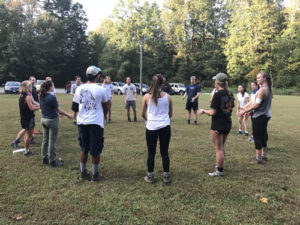When big data produces new insights, the results can be stunning. Uncovering new growth opportunities, finding answers to long-asked organizational questions, and using IT resources more effectively are just a few of the outcomes big data can offer.
However, building the integrated data sets necessary for big data to work its magic has historically been challenging for colleges and universities, even more so than for businesses. While higher education institutions do aggregate massive amounts of data, often individual departments collect and review it in isolation.
Fortunately, the introduction of new technology, specifically designed with higher education in mind, is helping to drive a new wave of campus modernization. At Elon University in North Carolina, we’ve been able to harness the power of big data, increasing collaboration across departments and ultimately enhancing the college experience with a true focus on student success. With a renewed campus-wide focus on data and the technology to help us get there, we’ve successfully used big data insights to directly improve student and staff outcomes. Here’s how we did it.
Building a sandbox of innovation
The concept of using student and administrative data to improve the overall experience for students and staff is relatively new to higher education. While colleges and universities already have access to terabytes of potentially useful data, many institutions don’t have the means of aggregating that data across departments to quickly extract actionable information.
For us, the first step to solve this challenge was creating a flexible digital platform that could collect, integrate, and store a massive amount of data. We needed a solution that would ingest enough data to give us insight into campus processes, practices, and behaviors. We chose Ellucian Colleague® for its flexibility and ease of use. Because it’s hosted in the cloud, we could focus on collecting the right data and pulling the most relevant insights from it, not maintaining IT infrastructure and trying to keep up with application releases.
Improving the college experience and enabling post-graduation success
Once we had the right data feeds integrated across campus, we could begin to create some really exciting and innovative solutions. One recent example is the Elon Experiences Transcript (EET), which is made possible by the student data we’re now tracking. The EET, unlike traditional transcripts, is designed to demonstrate a holistic picture of each student’s skills, interests, and accomplishments by focusing on the specific skills learned through their college experiences.
The EET serves as an interactive portfolio that features more than just a student’s degree and grade point average. It includes descriptions of their work while on campus, explanations of leadership positions they held, and details on courses they took. Potential employers can then dive even deeper to view more detailed information, such as outcomes of specific classes and in-depth descriptions of research in a particular field. The EET gives a more nuanced picture of a potential employee, greatly helping recruiters find the right fit for a job and ensuring Elon students have a better chance of getting hired.
We’re also using big data to gain insight into a range of processes across campus, from studying what makes high-achieving programs successful, to training advisors with metrics-driven feedback, to measuring on-campus engagement, and even designing new degrees.
For example, after we uncovered a trend in data that showed our theatre students were lagging behind others in participating in global education opportunities, we revised the degree path to incorporate global education into the body of the major. These types of course corrections are easier to make and to justify with the backing of data evidence.
Data. Insights. Campus-wide improvement.
With two full years of data securely stored on our platform and more being collected every day, we are in an incredible position to quickly react and adapt to campus-wide challenges. We’ve found that it’s no longer just academics that create a successful, thriving student, but the combination of academic coursework and an enriched on-campus experience. To create the best experience possible, it’s becoming increasingly important for schools to recognize the value of data they already have in their possession and invest in using that data to fuel innovation.
Collecting data, if not done properly, is meaningless. Data’s value is in the insights it uncovers and those insights are only possible with a system that can aggregate, integrate, and store it in ways that make it easy to understand and react to patterns. The good news is it’s easier and more cost-effective than ever to invest in data. Today, universities have the ability to holistically influence student and staff outcomes, creating massive new opportunities for innovation.
- Survey: More students want to go to graduate school - April 24, 2024
- Educause, AWS launch generative AI readiness assessment tool for higher ed - April 23, 2024
- A bungled FAFSA rollout threatens students’ college ambitions - April 19, 2024

